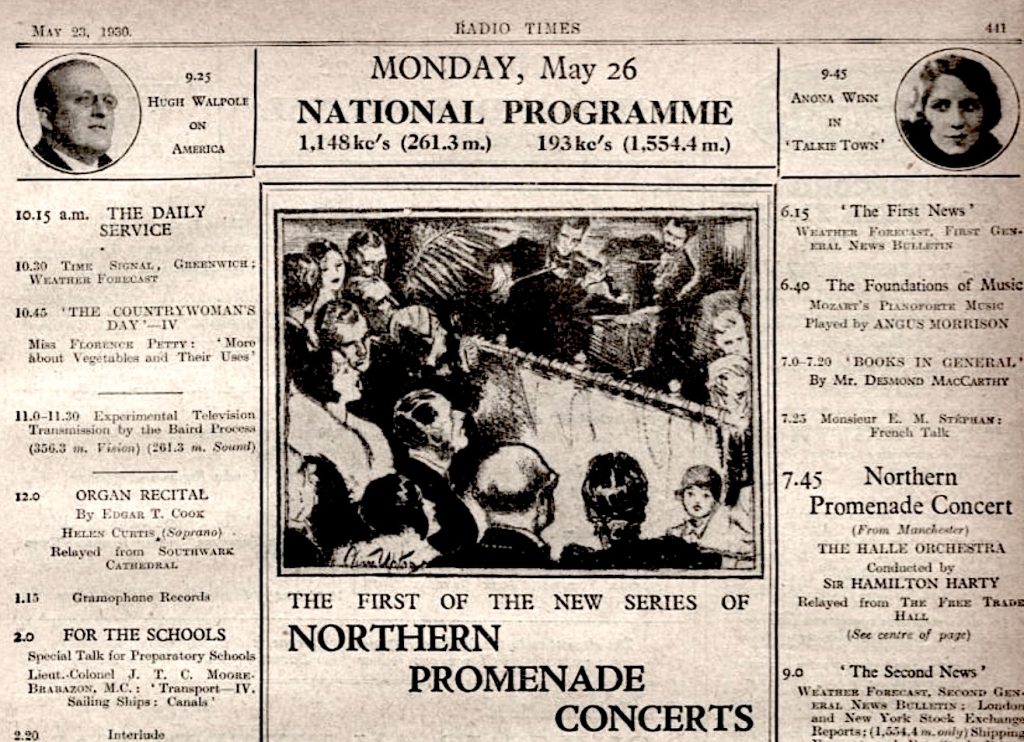OTD in early British television: 26 May 1930

John Wyver writes: By the late spring of 1930 Baird Television Ltd had been transmitting thrice weekly half-hour variety bills for around 18 months. The 30-line images were very basic and the service’s profile can be judged from the minimal visibility in Radio Times, halfway down the left-hand column, of the broadcast on the morning of Monday 26 May: ‘Experimental Television Transmission by the Baird Process’.
Although Radio Times provides no details, the Programme-as-Broadcast record details that this show featured musical comedy artist Nancy Fraser and comedy entertainer Doris Palmer, along with Dorothy Gadsden and Richard Hughes in ‘duets’. That’s the magic word, which appears for the first time on this day in the Baird listings and suggests that the system was by this point sophisticated enough to feature two figures on screen together.
The Baird broadcasts were mounted in a small studio at the company’s offices in Covent Garden’s Long Acre. At the beginning of 1930 the scanner required a performer to sit or stand stock still in a darkness broken only by the insistent flashes of the scanning beam coming through a disc spinning at 750 rpm.
Light was reflected back to four closely-mounted photo-electric cells, arranged just above a window to the control room from where the scanner beam was coming, and these created the signal that, after travelling wirelessly or via cable, could be interpreted in a receiver to compose a tiny, constantly flickering image. Initially, the frame permitted only a rigidly static head-and-shoulders shot with next-to-no depth-of-field.
Developments in the vision technology gradually permitted the introduction of variations, starting with the ability to tilt the camera to respond to the different heights of contributors. Improvements were gradually made in the optical efficiency of the system and the studio was enlarged.
‘Coupled with the greater size of the reconstructed studio itself,’ Bruce Norman noted in his 1984 history Here’s Looking at You, ‘which allowed performers to retreat some distance from the camera whilst still within range of the scanning beam, [these changes] meant that the television picture could, very briefly, show a person full-length.’
Exploiting this bigger picture, broadcasts in the late spring of 1930 started to feature pairs of performers, seemingly beginning with Dorothy Gadsden and Richard Hughes performing duets, soon followed the popular comics from South Africa Max and Harry Nesbitt. Here is the start of the screen language of television.
[OTD post no. 160; part of a long-running series leading up to the publication of my book Magic Rays of Light: The Early Years of Television in Britain in January 2026.]
Leave a Reply